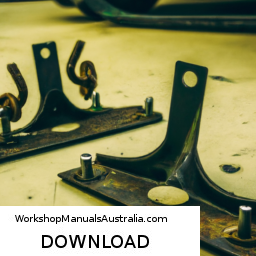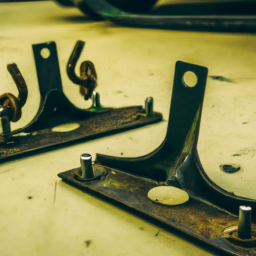
### Transmission Control Module (TCM) Repair on a Chrysler Sebring JX #### Theory Behind TCM Repair The Transmission Control Module (TCM) is like the brain of your car’s transmission system. click here for more details on the download manual…..
- 1996 Sebring convertible rust treatment
- Sebring Gen 1 Convertible on the road #shorts Showing chrysler sebring gen 1 convertible cruising on the road with 100km/h.
### Transmission Control Module (TCM) Repair on a Chrysler Sebring JX
#### Theory Behind TCM Repair
The Transmission Control Module (TCM) is like the brain of your car’s transmission system. It controls the shifting of gears, ensuring smooth transitions between them based on various inputs from the vehicle. If the TCM fails or malfunctions, it can lead to poor shifting, slipping gears, or even complete transmission failure.
#### How the TCM Works
1. **Inputs**: The TCM receives data from various sensors:
– **Throttle Position Sensor (TPS)**: Indicates how much the accelerator is pressed.
– **Vehicle Speed Sensor (VSS)**: Measures how fast the car is moving.
– **Engine RPM (Revolutions Per Minute)**: Monitors engine speed.
2. **Processing**: The TCM processes this information using programmed algorithms to determine the optimal time to shift gears.
3. **Outputs**: It sends signals to the transmission to engage the appropriate gears, ensuring efficient power transfer from the engine to the wheels.
#### Common Issues with TCM
– **Electrical Failures**: Damaged wiring or connections can disrupt the signal flow.
– **Software Corruption**: Bugs in the programming can lead to erratic behavior.
– **Overheating**: Poor cooling can damage internal components.
– **Sensor Failures**: If inputs are inaccurate, the TCM may make incorrect shifting decisions.
### Tools and Components Needed for Repair
#### Tools
1. **OBD-II Scanner**: To read diagnostic trouble codes (DTCs).
2. **Multimeter**: For checking electrical components and connections.
3. **Socket Set**: For removing bolts and screws.
4. **Screwdrivers**: Flathead and Phillips for various screws.
5. **Wrench Set**: For nuts and bolts.
6. **Soldering Iron**: For repairing circuit board connections.
7. **Heat Shrink Tubing**: To insulate soldered connections.
#### Components
1. **Replacement TCM**: If the module is beyond repair.
2. **Wiring Harness**: May need replacement if damaged.
3. **Connectors**: New connectors if old ones are corroded or damaged.
4. **Thermal Paste**: For heat dissipation if required.
### Step-by-Step Repair Process
1. **Diagnose the Issue**:
– Connect the OBD-II scanner to the vehicle’s port.
– Read and note any DTCs related to the transmission.
2. **Remove the TCM**:
– Locate the TCM (usually under the dashboard or near the transmission).
– Disconnect the battery to prevent electrical shorts.
– Remove the screws/bolts holding the TCM in place using the socket set.
– Carefully disconnect the wiring harness from the TCM.
3. **Inspect the TCM**:
– Open the TCM casing (if applicable) to check for burnt components or loose connections.
– Use the multimeter to test for continuity on circuit pathways.
4. **Repair or Replace**:
– **If Repairing**:
– Resolder any loose connections and replace damaged components.
and replace damaged components.
– Use heat shrink tubing to insulate soldered areas.
– **If Replacing**:
– Obtain a compatible replacement TCM.
5. **Reinstall the TCM**:
– Connect the wiring harness to the new or repaired TCM.
– Secure the TCM in place with screws/bolts.
– Reconnect the battery.
6. **Clear Codes and Test**:
– Use the OBD-II scanner to clear any DTCs.
– Start the vehicle and test drive to ensure smooth shifting.
### Conclusion
Repairing or replacing the TCM in a Chrysler Sebring JX is crucial for maintaining optimal transmission performance. By understanding its function and following the steps outlined, you can address common issues effectively. Always ensure safety by disconnecting the battery and using the proper tools.
A shock mount, also known as a vibration isolator or shock absorber mount, is a crucial component in automotive engineering designed to dampen vibrations and reduce noise transmitted from the vehicle’s engine and suspension systems to the vehicle chassis. Its primary function is to isolate vibrations caused by road irregularities, engine operation, and other dynamic forces, thus enhancing passenger comfort and protecting sensitive components.
The shock mount typically consists of a rubber or elastomeric material that absorbs and dissipates energy. When the vehicle encounters bumps or irregularities in the road, the shock mount flexes and compresses, absorbing the kinetic energy generated by these forces. This elastic behavior significantly reduces the amplitude of vibrations felt inside the cabin and minimizes the stress on other components, such as the engine, transmission, and chassis.
The shock mount interfaces with several critical components in the vehicle, including the shock absorbers themselves, the suspension system, and the engine or drivetrain. It acts as a bridge between the engine or suspension strut and the vehicle’s body, facilitating a smooth transfer of forces while minimizing unwanted noise and vibration.
The operating physics of a shock mount are rooted in principles of dynamics and material science. The mount’s ability to absorb vibrations is determined by its material properties, including stiffness and damping characteristics. The effectiveness of a shock mount can be influenced by factors such as frequency of vibration, load conditions, and temperature, which can alter the material’s behavior. Understanding these dynamics is essential for designing shock mounts that can effectively isolate vibrations while ensuring the durability and longevity of the vehicle’s components. Properly designed shock mounts contribute to overall vehicle performance, ride quality, and occupant comfort, making them a vital element in modern automotive design.
iShares ATX UCITS ETF (DE) – fondsweb Der Fonds bildet möglichst genau die Wertentwicklung des ATX® (Preisindex) ab. Der Index misst die Wertentwicklung der 20 am häufigsten gehandelten und per Börsenkapitalisierung auf Free-Float-Basis größten Aktien, die am regulierten Markt (Prime Standard) der Wiener Wertpapierbörse notiert sind.
iShares ATX UCITS ETF (DE) | A0D8Q2 | DE000A0D8Q23 Der iShares ATX UCITS ETF (DE) bildet den ATX® Index nach. Der ATX® Index bietet Zugang zu den 20 größten und meistgehandelten österreichischen Aktien, die im Prime Standard der Wiener Börse gelistet sind.
DE000A0D8Q23 • iShares ATX UC ETF (DE) • Kurs • Wiener Börse WIENER BÖRSE – iShares ATX UC ETF (DE) (DE000A0D8Q23) – aktueller Kurs, Tickdaten, Chart und historische Daten für iShares ATX UC ETF (DE).
iShares ATX UCITS ETF (DE) | EXXX Der Fonds strebt die Nachbildung der Wertentwicklung eines Index an, der aus den 20 größten und am häufigsten gehandelten österreichischen Unternehmen besteht, die am Prime Market der Wiener Börse notiert sind. WICHTIGE INFORMATIONEN: Kapitalrisiken.
iShares ATX UCITS ETF (DE) | EXXX – BlackRock Der Fonds strebt die Nachbildung der Wertentwicklung eines Index an, der aus den 20 größten und am häufigsten gehandelten österreichischen Unternehmen besteht, die am Prime Market der Wiener Börse notiert sind. WICHTIGE INFORMATIONEN: Kapitalrisiken.
ISHARES ATX DE ETF | Kurs | Realtime | Chart – boerse.de ISHARES ATX DE: Alles zum ETF, Realtime-Kurs, Chart, Nachrichten, Marktberichte, Chartanalysen und vieles mehr.
iShares ATX UCITS ETF (DE) (A) / EUR – Kurs, Details und Kennzahlen … Investment. Schl. Monat. Max. Verlust.
ISHARES ATX UCITS ETF (DE) Fonds | aktueller Kurs – finanzen.at So investiert der iShares ATX UCITS ETF (DE): Der iShares ATX (DE) ist ein börsengehandelter Indexfonds (Exchange Traded Fund, ETF), der möglichst genau die Wertentwicklung vom ATX Index abbildet. Der ETF investiert direkt in die im Index enthaltenen Wertpapiere.
iShares ATX (DE) UCITS ETF EUR Dis.: ETF Kurs aktuell (A0D8Q2 … – onvista Der iShares ATX UCITS ETF (DE) (der ‘Fonds’) ist ein passiv verwalteter, börsengehandelter Fonds (ETF), der anstrebt, möglichst genau die Wertentwicklung des ATX® (Preisindex) abzubilden.
ISHARES ATX ETF Kurs | A0D8Q2 | DE000A0D8Q23 | finanzen.net So investiert der iShares ATX UCITS ETF (DE): Der iShares ATX (DE) ist ein börsengehandelter Indexfonds (Exchange Traded Fund, ETF), der möglichst genau die Wertentwicklung vom ATX Index…